The irony of the OP's post for me is that I bought my Tesla FOR road trips. It allowed me to go to one car, an EV powered by solar panels, and still make long road trips whenever I wanted. Go figure.
My car, an S-60, is so short range — now down to 162 rated miles capacity — that it wasn't even intended for road trips but I make do with care and experience. (I bought it used because it was all I could afford.) Most of the 108,000 miles I've put on the car are from long road trips. I like that I can sleep in the car, since it will fit a full length air mattress, and my favorite overnight stops are at campgrounds (I particularly like state parks) because I can just plug-in to the RV pedestal and charge overnight.
My charging stops are much longer than those who have newer, longer range cars but I don't mind because I'm in no hurry. I find that my Tesla road trips are a lot more restful than previous ICE car road trips — the charging stops give me time to get out and walk around and I find myself a lot less fatigued from fifteen hour driving days than before.
So, can't do road trips? I've done SEVEN 2300 mile trips to Portland OR to visit family. I've done two 2000+ mile trips to southern California to visit friends. I've done a 4600 mile trip to Vancouver Island BC (Victoria, Tofino), Vancouver, and Yellowstone National Park. I've done a 6100 mile road trip to the Midwest (MN, WI, IL, MI, IN). This year I did a 2400 mile camping trip in Arizona in March, a 3400 mile trip to Northern California to see the redwoods for the first time in many years, and a 2000 mile trip to Custer SD for the annual Tesla rally, both in May. Over the years I've visited 261 different Supercharger Stations in 23 states and provinces and visited fifteen national parks and monuments. In a relatively short range S-60.
I love doing Tesla road trips — it's what I bought the car for!
Some road trip pictures:
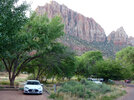
^ Camping in Zion National Park.
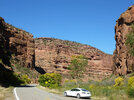
^ Dolores River Canyon, on the road to Gateway CO.
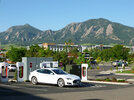
^ Supercharging in Boulder CO, 330 miles from home.
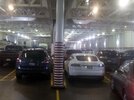
^ On the ferry from Port Angeles WA to Victoria BC.
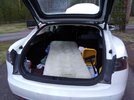
^ Camping in Yellowstone National Park.
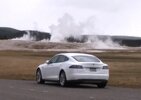
^ Lower Geyser Basin in Yellowstone National Park.
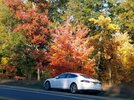
^ On the road in Michigan, a long way from home.
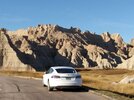
^ Badlands National Park SD.
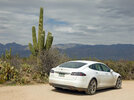
^ Saguaro National Park, near Tucson AZ.
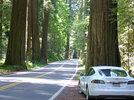
^ Avenue of the Giants, northern California.












